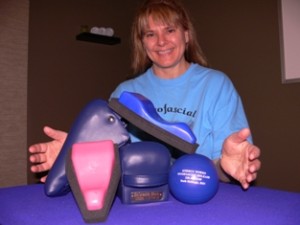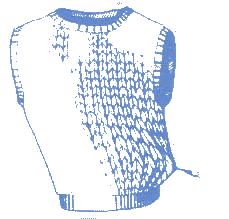What is Myofascial Release?
Myofascial release, (MFR) is an effective hands-on technique which applies sustained pressure into myofascial restrictions to alleviate pain and dysfunction. Energy Works Myofascial Release utilizes the John F. Barnes approach to treatment. Myofascial stretching or gentle pressure is applied into an area for a minimum of 90-120 seconds, but may be sustained for longer than 15 minutes if needed. Allowing the fascia to release for an extended period of time allows the body to make permanent changes. While most releases are completed using techniques involving the therapists hands and elbows, wedges, bolsters, and other tools may be used to assist during treatment. The same or similar tools may be recommended for self-treatment at home.MFR is mistakenly referred to as a form of massage. Massage therapy utilizes lotions and oils to facilitate constant stroking movements over the superficial layer of the body for a relaxation massage. More aggressive stroking of the muscle tissue, or deep tissue massage, is a form of soft tissue mobilization. Energy Works Myofascial Release does not offer massage therapy.
To effectively sustain pressure during MFR for any length of time, oils and lotions are not used by the therapist and should not be present on the patient at the time of treatment. MFR techniques require an engagement of the fascial tissue for an extended period of time. Lotions and oils interfere with that ability. Engaging the fascia is necessary to allow for authentic healing and produce longer lasting results.
Although a client may arrive with a specific area(s) of discomfort, diagnosis, or dysfunction, the whole body will be assessed and treated during a session. Restrictions within the body may contribute to symptoms in other parts of your body. This is why the Barnes approach to treatment is different and more comprehensive than traditional therapies that focus on treating or masking only the symptoms. While MFR will involve treatment of symptomatic areas, your therapist will look, feel, and treat the connections within your body to allow for healing to occur. Hence the phrase “Find the Pain, Look Elsewhere for the Cause.”1 For example, when performing a release technique on the legs; the client may feel sensations in the back or neck. Treatment of the back and neck would be incorporated into the session or a follow-up session. When performing a release within areas of the pelvis, the client may feel sensations in the arm or tailbone. Those areas would be treated as well. The connections may seem illogical for the mind to comprehend, but the body knows and understands the connections that will support the healing process.
What is Fascia?
"Fascia is very densely woven, covering and interpenetrating every muscle, bone, nerve, artery and vein as well as of our internal organs including the heart, lungs, brain and spinal cord. The most interesting aspect of the fascial system is that it is not just a system of separate coverings. It is actually one structure that exists from head to foot without interruption. In this way you can begin to see that each part of the entire body is connected to every other part by the fascia, like the yarn in a sweater."2
What is a Restriction?
Restrictions are areas of hardened or tight fascia compressing nerves, organs, and other tissue that lead to symptoms of pain and dysfunction. Restrictions can occur as a result of surgical scarring, trauma, poor posture, injury and stress and do not show up on standard tests.3 The location and symptom of a restriction may feel hot, hard or tender to the therapist or client. The symptoms are the fascial cues that guide the therapist during treatment.
1,3 John F. Barnes Treatment Centers and Seminars
2 John F. Barnes Myofascial Release Website: myofascialrelease.com


